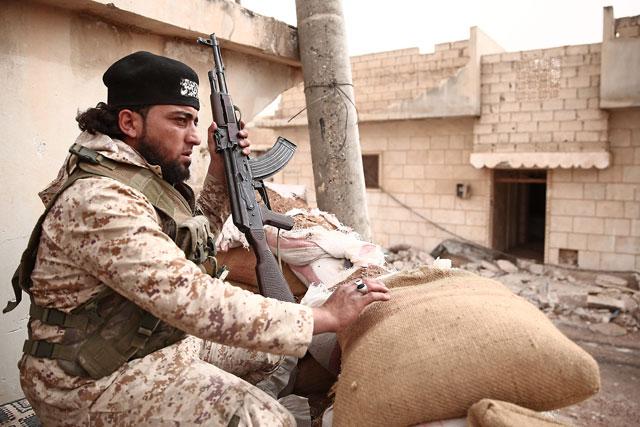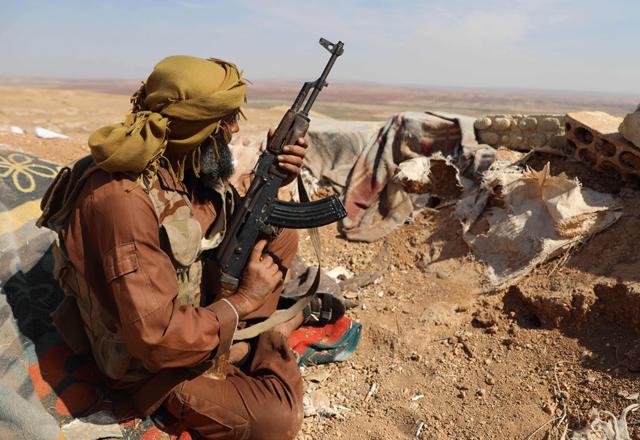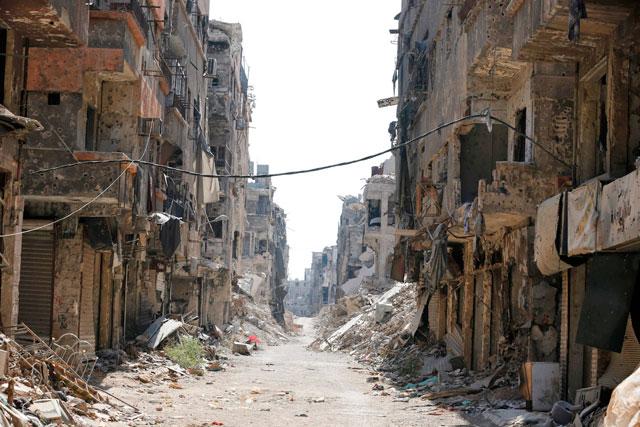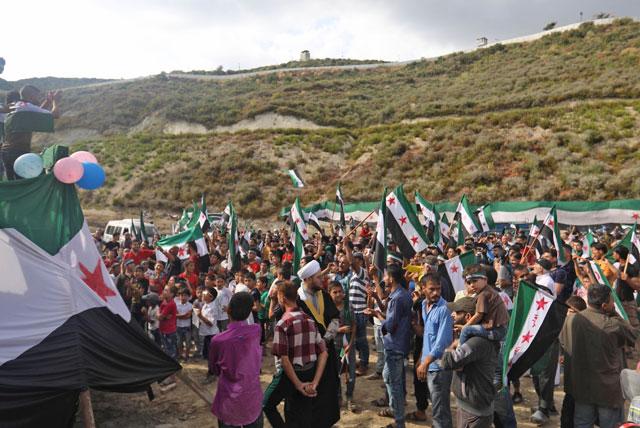You are here
Heavy arms go, but Syria rebels alert on frontline
By AFP - Oct 09,2018 - Last updated at Oct 09,2018

A Turkey-backed Syrian rebel-fighter holds his rifle near the city of Al Bab, in the Aleppo province on the border with Turkey, on Monday (AFP photo)
AL EIS, Syria — The young dust-covered rebel looked out warily from a dirt trench facing opposing regime forces as his unit pulled heavy weapons from a planned buffer zone in northern Syria.
Squinting in the sun, he watched over the vast agricultural fields and web of dirt roads straddling opposition and government territory.
In the coming days, this area will see the establishment of a demilitarised zone meant to avert a massive regime assault on the Idlib region, the last major rebel bastion in Syria.
Under a deal reached last month by rebel backer Turkey and regime ally Russia, the U-shaped zone ringing Idlib would be free of heavy weapons and extremists by October 15.
On Monday, Turkish state news agency Anadolu said Syrian rebels had finished withdrawing their heavy arms from the zone.
It took them just a few days. The National Liberation Front (NLF), the main Ankara-backed rebel alliance in Idlib, had started removing weapons at the weekend.
No tanks or rocket launchers could be seen at the NLF’s position on the Al Eis hilltop, in the westernmost part of Aleppo province near Idlib.
An older, bearded NLF commander walked through the maze of trenches in plastic sandals, a mustard-coloured scarf wrapping his head and a Kalashnikov swung across his back.
Rusted barrels and loose cinderblocks littered the upper lip of the trenches, providing added protection.
Another younger fighter scrambled into a tunnel dug into the hilltop and reinforced with sandbags and corrugated metal.
“Pulling the heavy weapons will not affect our positions. We are continuing to reinforce and bolster them,” NLF commander Abu Walid told AFP.
“Our instructions are to remain in these areas and not retreat until the last drop of blood.”
Turkish convoys
Government forces are stationed just five kilometres (three miles) away in the town of Al Hader, but the front is calm.
The two areas are connected by a trade checkpoint, and trucks of goods can be seen moving back and forth on the dusty road.
As the deadline to establish the buffer zone nears, rebel ally Turkey has dispatched convoys of personnel carriers and troops into Syria on a near-weekly basis.
It already operates more than a dozen monitoring posts around Idlib and Aleppo, and analysts expect the new deliveries to be distributed along what would become a “first line of defence” for opposition areas.
“The entry of Turkish forces to these well-known positions is strengthening day after day,” said Abu Walid.
He said “soldiers, tanks, and heavy weapons” were being brought into the monitoring posts.
But establishing the buffer still faces a major stumbling block: the extremists who hold around two-thirds of the planned zone have yet to come on board.
Current Al Qaeda affiliate Hurras Al Deen has rejected the deal outright, while Hayat Tahrir Al Sham, an alliance led by former Al Qaeda members, has not yet taken a stance.
Some analysts say that could indicate room for negotiation leading to an eventual approval from HTS. But the group itself has slammed any deals with the regime.
Even rebels who have signed up to the accord have raised some objections.
They say the deal demands too much of them, and fear that it could eventually pave the way for a regime takeover of their main remaining stronghold.
Their wariness may be justified. On Sunday, Syrian President Bashar Assad said the deal is just a “temporary measure” to halt bloodshed and that Idlib would eventually inevitably return to state control.
Related Articles
AL EIS, Syria — The withdrawal by rebels of their heavy weapons from a planned buffer zone in north-western Syria is due to last several day
BEIRUT — A planned buffer zone in northwest Syria has been cleared of heavy armaments, Turkey said Wednesday, as a new deadline loomed for t
BEIRUT — Syrian rebels said Saturday they have begun withdrawing heavy arms from a planned buffer zone in north-western Idlib province, ahea


















